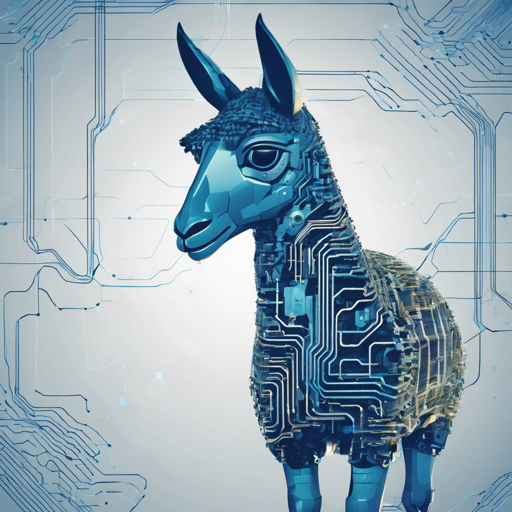In the continuously evolving world of artificial intelligence, the Llama 3.1 model presents an exciting breakthrough for AI enthusiasts and developers. In this blog, we will explore how to efficiently deploy and use the Meta-Llama-3.1-8B model, specifically the AWQ version provided by Cognitive Computations. Let’s dive into the details, troubleshoot common issues, and enhance our coding schemas.
How to Use the Llama 3.1 Model
Before you harness the capabilities of this sophisticated model, you need to set up your environment. Here’s a step-by-step guide for installation and execution:
1. Install the Necessary Packages
First, ensure you have Python installed on your machine. Open your terminal and type the following command to install the required libraries:
bash
pip install --upgrade autoawq autoawq-kernels2. Example Python Code
With the packages installed, you can now write Python code to interact with the model. Picture programming with the Llama 3.1 as hosting a virtual conversation with a knowledgeable friend. Here’s how to initiate that conversation:
python
from awq import AutoAWQForCausalLM
from transformers import AutoTokenizer, TextStreamer
# Setup the model path
model_path = "solidrust/dolphin-2.9.4-llama3.1-8b-AWQ"
# Prepare the system message
system_message = "You are dolphin-2.9.4-llama3.1-8b, incarnated as a powerful AI. You were created by cognitivecomputations."
# Load model
model = AutoAWQForCausalLM.from_quantized(model_path, fuse_layers=True)
tokenizer = AutoTokenizer.from_pretrained(model_path, trust_remote_code=True)
streamer = TextStreamer(tokenizer, skip_prompt=True, skip_special_tokens=True)
# Convert prompt to tokens
prompt_template = "{system_message} {prompt}"
prompt = "You're standing on the surface of the Earth. You walk one mile south, one mile west and one mile north. You end up exactly where you started. Where are you?"
tokens = tokenizer(prompt_template.format(system_message=system_message, prompt=prompt),
return_tensors='pt').input_ids.cuda()
# Generate output
generation_output = model.generate(tokens, streamer=streamer, max_new_tokens=512)This code segment sets up the environment for conversation by defining a model and prompting it for answers, much like asking a friend a puzzling riddle.
Understanding AWQ
A part of your toolkit is AWQ, an advanced low-bit weight quantization method designed to accelerate text generation while maintaining accuracy. Think of AWQ as a chef who optimizes the cooking process without compromising the taste of the dish. With its ability to utilize 4-bit quantization, it can deliver results quickly while ensuring quality. AWQ models are compatible with Linux and Windows environments, specifically designed for NVidia GPUs. MacOS users should explore GGUF models for their requirements.
Troubleshooting Common Issues
While using the Llama 3.1 model, you might encounter some challenges. Here are a few troubleshooting tips:
- Installation Issues: Ensure you have the correct version of Python and required packages installed. You can check the compatibility from the respective GitHub repositories.
- CUDA Errors: If encountering errors related to CUDA, verify your GPU drivers and ensure they are properly installed. Use the command
nvidia-smiin the terminal to confirm that your GPU is recognized. - Model Loading Problems: If the model fails to load, ensure that the model path is correct and the required files are downloaded. Always refer to the model’s documentation.
For more insights, updates, or to collaborate on AI development projects, stay connected with fxis.ai.
At fxis.ai, we believe that such advancements are crucial for the future of AI, as they enable more comprehensive and effective solutions. Our team is continually exploring new methodologies to push the envelope in artificial intelligence, ensuring that our clients benefit from the latest technological innovations.
Conclusion
The Llama 3.1 model, particularly in its AWQ form, offers a robust framework for text generation tasks, enabling you to engage in sophisticated AI-driven conversations or analyses. By following this guide, troubleshooting with ease, and understanding the underlying technologies like AWQ, you can leverage this model effectively in your projects.

